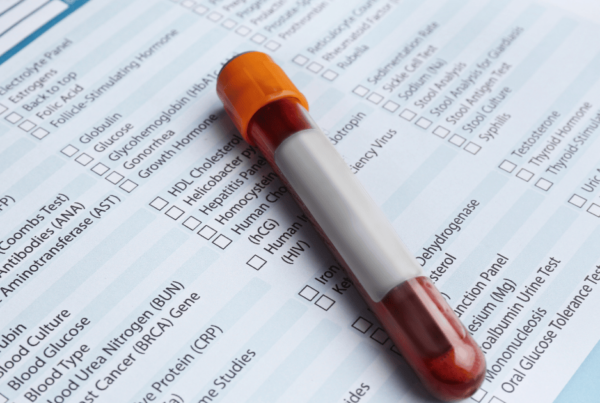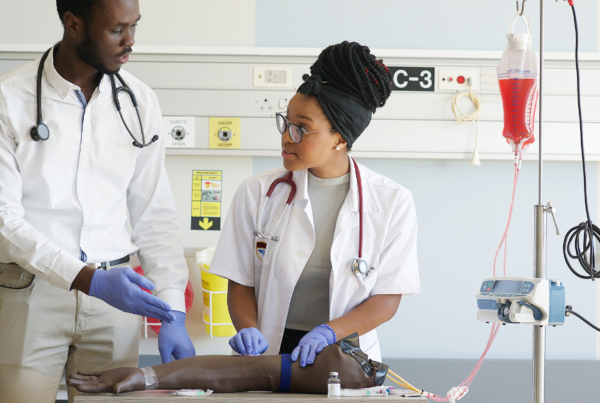Donating blood is a selfless act that can significantly impact many lives. However, the logistics of blood collection, especially the conversion between the standard donation amount (a pint) and the smaller vials used in medical testing, can be confusing. This comprehensive guide, tailored for phlebotomy professionals and blood donation advocates, addresses the question: how many vials of blood in a pint?
| Key Takeaways |
| One pint of blood equals approximately 473 milliliters (mL). |
| A common blood test vial holds 10 mL. Thus, a pint can fill roughly 47-48 vials. |
| Understanding how many vials of blood in a pint aids in medical testing, research planning, and efficient blood bank management. |
| A single pint of blood can benefit multiple patients, underscoring the importance of blood donations. |
Understanding Blood Volume: Pints and Milliliters
In the United States and the United Kingdom, blood volume is commonly measured in pints. However, the medical field often uses milliliters (mL) for greater precision.
- One pint of blood is equivalent to approximately 473 milliliters (mL).
- This is the standard amount collected during a blood donation.
The Role of Vials in Medical Testing
Blood tests typically involve collecting smaller samples using vials, also known as test tubes. Vials come in various sizes, but a common volume for routine blood tests is 10 milliliters (mL). This size minimizes the amount of blood drawn while providing sufficient volume for most analyses.
Converting Pints to Vials: The Math Behind the Numbers
To answer the central question: how many vials of blood in a pint?
We can use a simple conversion formula:
- Number of vials = Total volume in a pint / Volume of one vial
- Number of vials = 473 mL / 10 mL/vial
- Number of vials ≈ 47.3
Since fractions of vials aren’t practical, we round this number to:
- 47 vials: A conservative estimate.
- 48 vials: A slightly higher yield, considering minimal blood loss during collection.
Thus, a single pint of blood can be separated into approximately 47-48 vials, each containing 10 mL of blood.
Practical Implications: From Blood Donations to Medical Research
Understanding how many vials of blood in a pint holds significant value for various stakeholders:
- Phlebotomists: It facilitates efficient blood collection and helps estimate the number of vials obtainable from each donation.
- Medical Researchers: Knowing the conversion allows researchers to plan studies effectively, determining the number of participants needed to collect sufficient blood samples.
- Blood Banks: They can estimate the potential number of vials derived from their blood supply, aiding in inventory management and ensuring efficient blood allocation.
The Far-Reaching Impact of Blood Donations
Each pint of donated blood holds immense potential:
- Multiple Patients, Multiple Benefits: A single pint can be divided into numerous vials, benefiting several patients with diverse medical needs.
- Transfusions and Beyond: Donated blood is used for transfusions during surgeries, treatment of anemia, supporting trauma victims, and various other crucial procedures.
Encouraging More Blood Donations: Knowledge is Power
By demystifying blood volume measurements and highlighting the impact of donations, we can inspire more people to participate in blood drives. Donating blood is a simple yet powerful way to contribute to public health and save lives.
Stories of Impact: The Power of a Single Donation
Real-life stories of how blood donations have saved lives can be incredibly motivating. Imagine a trauma victim requiring multiple transfusions to survive. Each vial of blood from a single pint plays a critical role in their recovery.
Frequently Asked Questions (FAQs)
Why is it important to know how many vials of blood in a pint?
Understanding this conversion is crucial for:
- Blood Donation Management: Blood banks can estimate the potential number of usable vials from each donation, allowing for better inventory control and efficient blood allocation.
- Medical Research Planning: Researchers can determine the number of participants required based on the amount of blood needed per test and the number of vials obtainable from a single pint.
- Effective Blood Draw Procedures: Phlebotomists can estimate the number of vials they can fill from a single donation, ensuring they collect sufficient blood for all necessary tests while minimizing discomfort for the donor.
How many vials of blood are typically used in a medical test?
The number of vials needed for a medical test varies depending on the specific analysis. Most routine tests require only 1-2 vials. However, some complex tests may necessitate a higher volume, potentially requiring 3-4 vials or more.
Can a single pint of blood help multiple patients?
Absolutely! As discussed, a single pint can be separated into approximately 47-48 vials. Each vial can then be used for various tests or procedures, potentially benefiting multiple patients with diverse medical needs.
How often can a person donate a pint of blood?
In general, healthy adults can safely donate blood every 56 days, which translates to roughly every two months. It’s important to follow guidelines from blood donation centers to ensure sufficient time for your body to replenish blood components before your next donation.
What are the common uses of donated blood?
Donated blood serves a vital role in various medical procedures and treatments:
- Transfusions: During surgeries, blood loss is a common occurrence. Donated blood is used to replace lost blood volume and maintain vital functions.
- Trauma Care: Trauma victims often experience significant blood loss. Transfusions with donated blood are crucial for stabilizing their condition.
- Treatment for Anemia: Individuals with anemia have a deficiency in red blood cells. Blood transfusions with donated red blood cells can significantly improve their health.
- Cancer Therapy: Some cancer treatments can suppress bone marrow function, impacting red blood cell production. Donated blood products are essential for supporting these patients.
- Chronic Disease Management: Patients with chronic illnesses like sickle cell disease may require regular blood transfusions to maintain their health.
Are there any risks associated with donating blood?
Blood donation is generally safe for healthy adults. Some minor adverse effects that could occur are:
- Lightheadedness or dizziness
- Bruising at the needle insertion site
- Discomfort in the arm during and after donation
Serious complications are extremely rare. However, it’s important to consult with healthcare professionals before donating if you have any underlying medical conditions or concerns.
How is donated blood processed after collection?
After donation, the collected blood undergoes a meticulous processing procedure:
- Testing: The blood is rigorously tested for infectious diseases like HIV, hepatitis, and syphilis.
- Separation: The blood is separated into its main components: red blood cells, plasma, and platelets. Each component has a specific shelf life and is stored accordingly.
- Storage: The separated blood components are stored under controlled conditions until needed for transfusions or further processing for medical research.
Conclusion: Understanding How Many Vials of Blood in a Pint
By understanding the relationship between pints and vials, we gain valuable insights into the world of blood donation and medical testing. A pint contains around 47 vials, demonstrating how much can be accomplished with a single act of giving. The next time you think about donating blood, remember the far-reaching impact of your contribution—one pint can truly save numerous lives.
We hope this comprehensive guide has shed light on the significance of blood donations and empowered you to participate in this life-saving endeavor. By providing clear information and addressing common questions, we aim to encourage more people to become blood donors and contribute to a healthier community. Every donation is a vital step in supporting the healthcare system and saving lives.
Ready to Make a Difference? Join Phlebotomy Now School!
Inspired by blood donations? Phlebotomy Now School offers expert training to help you become a certified phlebotomist.
Enroll now and start making a difference! Contact us for details.


